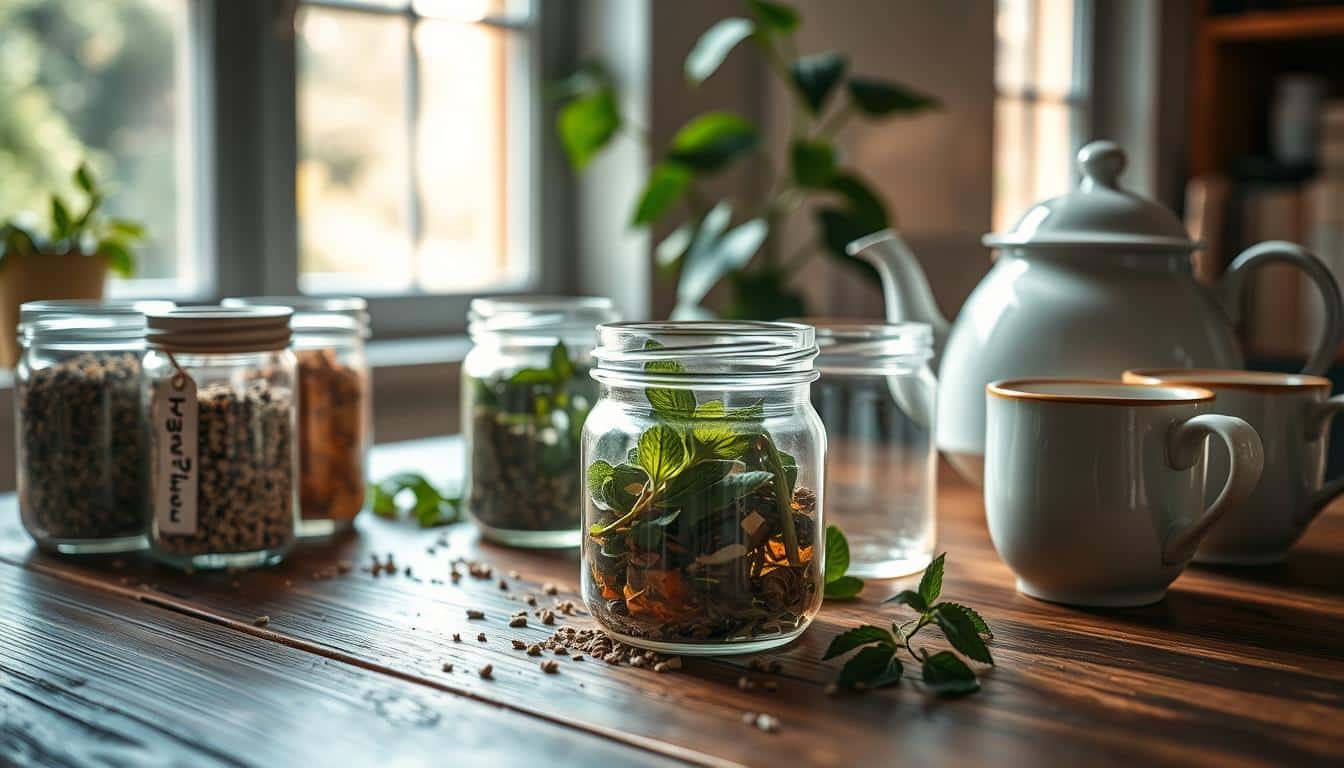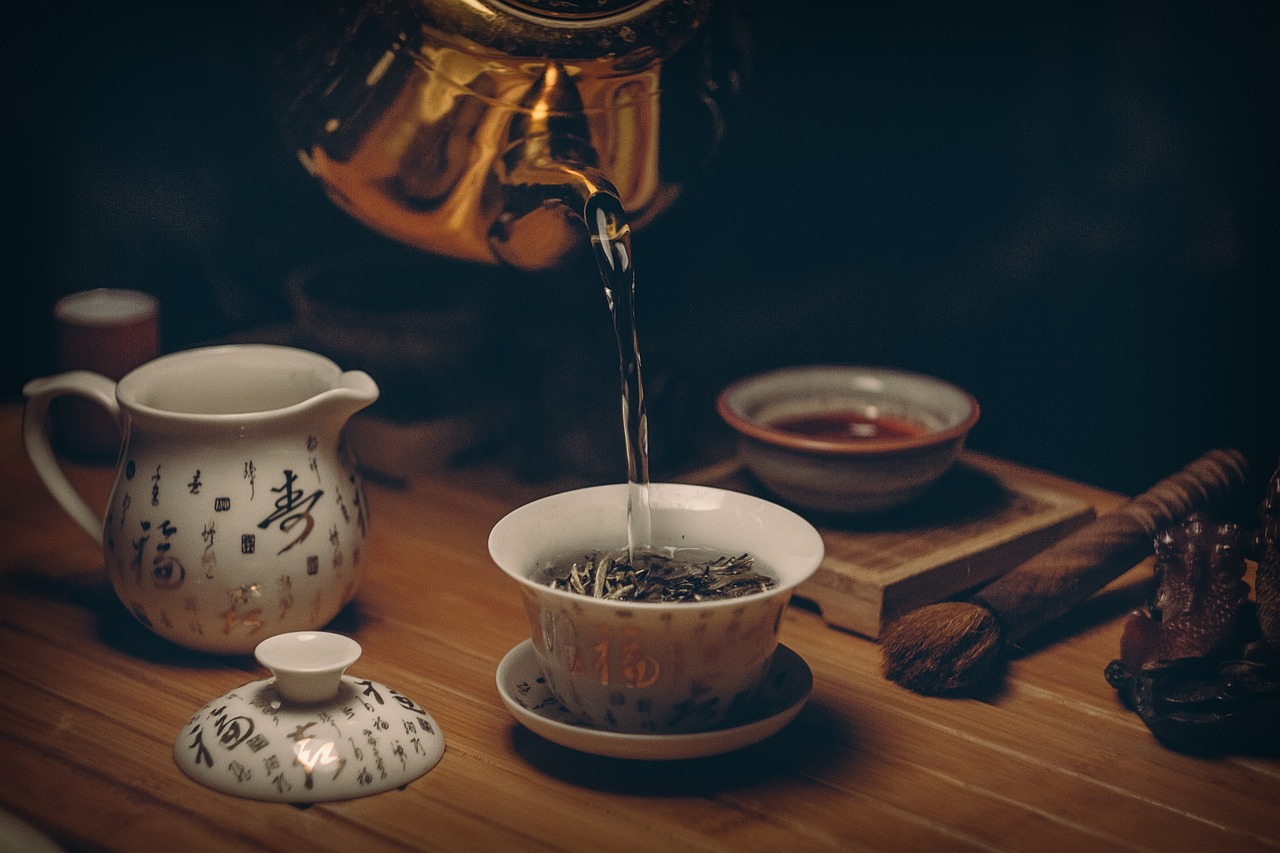Anúncios
Headaches can be debilitating, affecting daily life and productivity. While there are various treatments available, incorporating anti-inflammatory foods into your diet can play a significant role in managing headache symptoms.
Research suggests that certain foods have properties that can help alleviate headache pain. By making informed dietary choices, individuals can potentially reduce the frequency and severity of headaches.
Anúncios
Key Takeaways
- Incorporating anti-inflammatory foods can help manage headache symptoms.
- Diet plays a crucial role in headache relief.
- Certain foods have properties that alleviate headache pain.
- Making informed dietary choices can reduce headache frequency and severity.
- A well-balanced diet is essential for overall health and headache management.
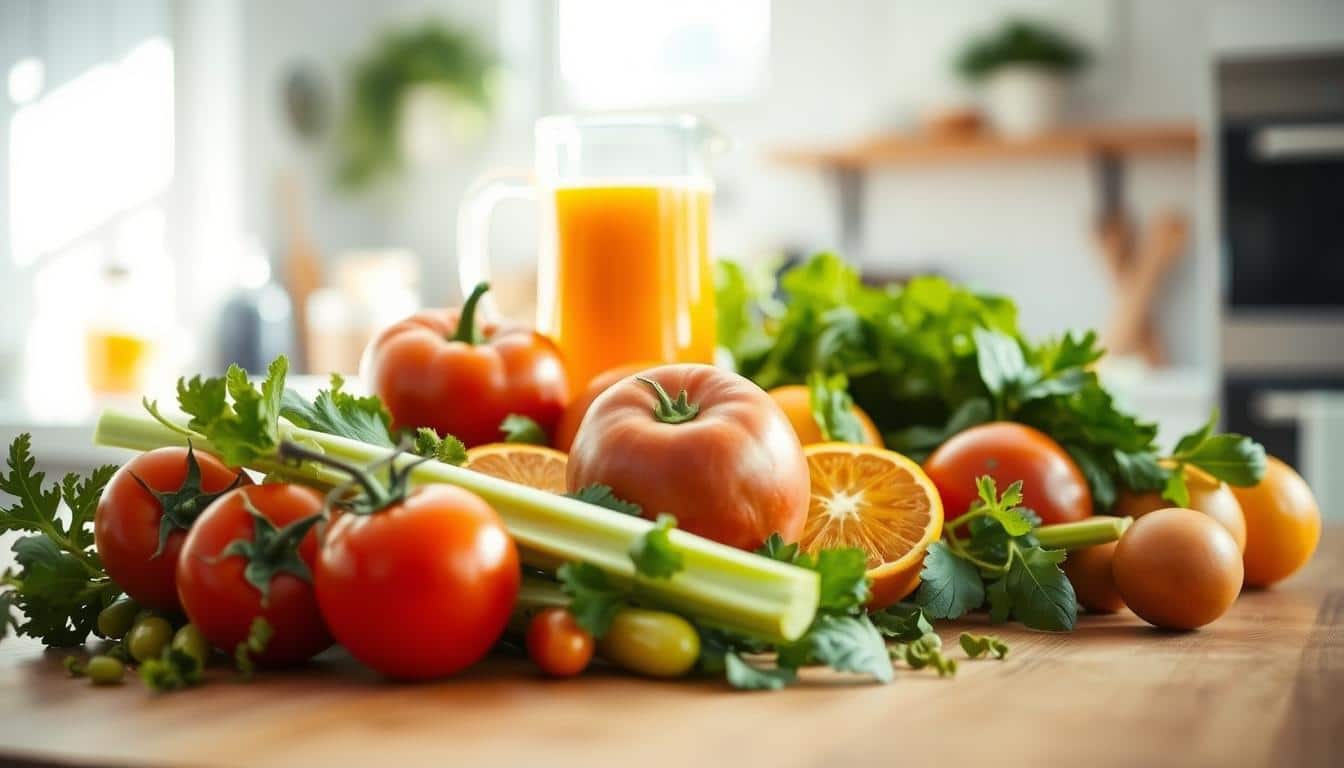
Natural Foods to Relieve Headaches
Understanding the Connection Between Food and Headaches
Understanding how diet influences headaches can be a crucial step towards relief. The foods we consume play a significant role in our overall health, and their impact on headache frequency and intensity is substantial. Research has shown that certain dietary patterns can either trigger or alleviate headache symptoms.
How Diet Affects Headache Frequency and Intensity
Diet affects headache frequency and intensity in several ways. Certain foods contain tyramine, histamine, and other compounds that can trigger headaches in susceptible individuals. On the other hand, a diet rich in essential nutrients and antioxidants can help reduce headache symptoms. For instance, foods high in magnesium, such as dark leafy greens, can help alleviate headache frequency.
Anúncios
The Science Behind Food-Related Headache Relief
The science behind food-related headache relief involves understanding how different nutrients and compounds affect biochemical processes in the body. For example, omega-3 fatty acids have anti-inflammatory properties that can help reduce headache intensity. Similarly, staying hydrated by consuming water-rich foods can prevent dehydration-induced headaches. Research continues to uncover the complex interactions between diet and headache symptoms, offering new avenues for headache relief.
Natural Foods that Relieve Headaches: An Overview
A well-balanced diet rich in anti-inflammatory and nutrient-rich foods can be a game-changer for headache sufferers. By incorporating the right foods into your diet, you can potentially reduce the frequency and severity of headaches.
Headaches are often a sign of underlying inflammation or nutritional deficiencies. Foods that are rich in antioxidants, omega-3 fatty acids, and magnesium can help alleviate headache symptoms.
Anti-Inflammatory Foods and Their Benefits
Anti-inflammatory foods are crucial in reducing headache frequency and intensity. Some of the most beneficial anti-inflammatory foods include:
- Turmeric, which contains curcumin, a powerful anti-inflammatory compound.
- Ginger, known for its anti-inflammatory properties and ability to soothe digestive issues that may trigger headaches.
- Fatty fish like salmon and sardines, rich in omega-3 fatty acids that reduce inflammation.
These foods work by reducing the body’s inflammatory response, which can help alleviate headache symptoms.
Nutrient-Rich Foods That Target Pain
Nutrient-rich foods play a vital role in headache relief by providing essential vitamins and minerals. Some key nutrient-rich foods include:
- Dark leafy greens like spinach and kale, rich in magnesium, a mineral that can help relax blood vessels and reduce headache frequency.
- Nuts and seeds, such as almonds and flaxseeds, which are rich in magnesium and healthy fats.
- Whole grains like quinoa and brown rice, which provide sustained energy and are rich in fiber and nutrients.
Incorporating these nutrient-rich foods into your diet can help target pain and reduce headache symptoms.
Magnesium-Rich Foods for Headache Prevention
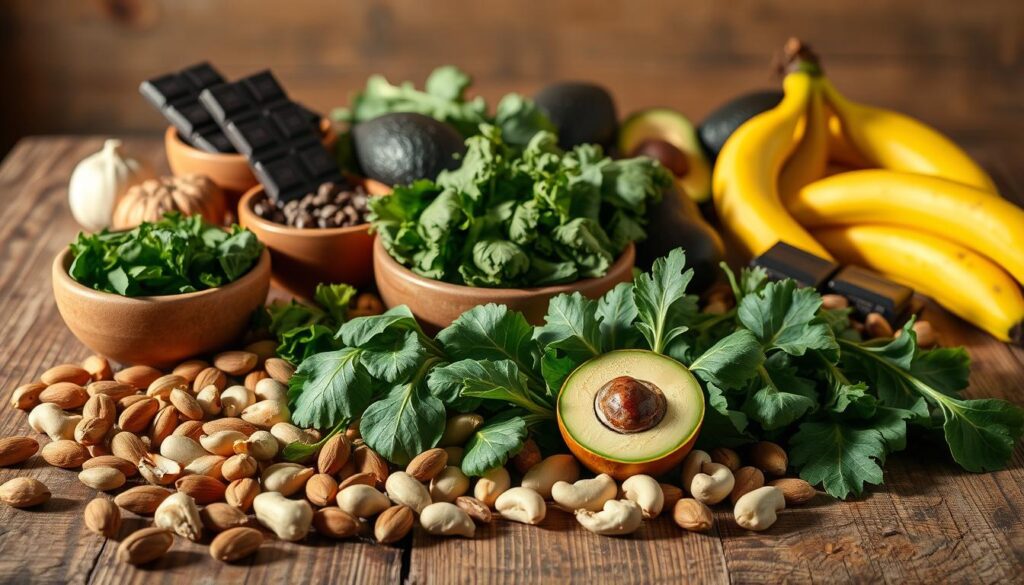
Incorporating magnesium-rich foods into your diet is a natural and effective way to reduce the frequency and intensity of headaches. Magnesium plays a crucial role in various bodily functions, including muscle relaxation and nerve function, which can help alleviate headache symptoms.
Dark Leafy Greens and Their Headache-Fighting Properties
Dark leafy greens are among the richest sources of magnesium. These greens not only provide a boost of magnesium but also offer other essential nutrients that support overall health.
Spinach, Kale, and Swiss Chard Benefits
Spinach, kale, and Swiss chard are excellent examples of dark leafy greens packed with magnesium. For instance, a single cup of cooked spinach provides approximately 157 mg of magnesium. Including these greens in your diet can be as simple as adding them to salads or sautéing them as a side dish.
Preparation Methods That Preserve Magnesium
To maximize magnesium intake, it’s essential to prepare these greens correctly. Steaming or lightly sautéing spinach, kale, and Swiss chard helps preserve their magnesium content. Avoid overcooking, as it can lead to a loss of this vital mineral.
Nuts and Seeds That Reduce Headache Frequency
Nuts and seeds are another magnesium-rich food group that can help reduce headache frequency. Almonds, cashews, pumpkin seeds, and sesame seeds are excellent sources of magnesium. Snacking on these or adding them to meals can significantly boost magnesium intake.
Whole Grains That Support Headache Relief
Whole grains, including brown rice, quinoa, and whole-wheat bread, are not only rich in magnesium but also provide fiber and other essential nutrients. Incorporating these into your diet can help maintain stable magnesium levels, supporting headache relief.
As Dr. Susan S. Lipman, MD, notes, “Magnesium is a critical component in the prevention and treatment of headaches.” By incorporating magnesium-rich foods into your diet, you can take a proactive step towards reducing headache pain and improving overall well-being.
“Magnesium deficiency is a common issue that can lead to various health problems, including headaches,” says Nutrition Expert, Jane Smith. “Ensuring adequate magnesium intake through diet or supplementation is vital for headache prevention.”
Hydrating Foods That Combat Headache Pain
Incorporating water-rich foods into your diet is a simple yet effective way to combat headache pain. Staying hydrated is essential for maintaining various bodily functions, and dehydration is a common trigger for headaches. By consuming the right foods, you can help keep your body hydrated and potentially reduce the frequency and severity of headaches.
Water-Rich Fruits for Headache Relief
Water-rich fruits are not only refreshing but also play a significant role in maintaining hydration levels. These fruits are high in water content, making them perfect for snacking and helping to keep the body hydrated.
Watermelon, Cucumber, and Strawberries
Fruits like watermelon, cucumber, and strawberries are excellent choices. Watermelon is made up of about 92% water, while cucumbers are about 96% water. Strawberries, though slightly lower in water content, are rich in antioxidants and fiber, making them a nutritious addition to your diet.
Best Times to Consume for Maximum Benefit
Consuming these fruits at the right time can enhance their hydrating benefits. Eating them as a snack between meals or as part of your breakfast can help maintain your body’s fluid balance throughout the day. As the saying goes, “Prevention is better than cure,” and staying hydrated can be a significant preventive measure against headaches.
Vegetables That Help Maintain Hydration
Besides fruits, certain vegetables are also high in water content and can contribute to your overall hydration. Incorporating these into your meals can be both delicious and beneficial for headache sufferers.
Vegetables like celery, radishes, and lettuce have high water content. Celery, for instance, is about 95% water and also contains electrolytes that can help maintain fluid balance. Including a variety of these hydrating vegetables in your diet can support overall health and potentially reduce headache occurrences.
“A healthy outside starts from the inside,” as Robert Urich once said, highlighting the importance of diet in overall well-being.
Omega-3 Rich Foods to Reduce Headache Inflammation
The anti-inflammatory properties of omega-3 fatty acids make them a valuable resource for reducing headache pain. Omega-3s have been shown to decrease the production of inflammatory eicosanoids, which are molecules that can trigger headache pain. By incorporating omega-3 rich foods into your diet, you can potentially reduce the frequency and severity of headaches.
Fatty Fish Options for Headache Sufferers
Fatty fish are among the richest sources of omega-3 fatty acids, particularly EPA and DHA. These nutrients have potent anti-inflammatory effects that can help alleviate headache symptoms. Some of the best fatty fish for headache relief include salmon, sardines, and mackerel. These fish are not only rich in omega-3s but also provide a good source of protein and other essential nutrients.
Plant-Based Omega-3 Sources
For those who follow a plant-based diet or prefer not to consume fish, there are several plant-based sources of omega-3s. While these sources primarily contain ALA, a different form of omega-3, they still offer significant health benefits.
Flaxseeds, Chia Seeds, and Walnuts
Flaxseeds, chia seeds, and walnuts are excellent plant-based sources of ALA. Incorporating these foods into your diet can be as simple as adding ground flaxseeds to your breakfast cereal or snacking on walnuts throughout the day.
Recommended Daily Intake for Headache Prevention
The recommended daily intake of omega-3s for headache prevention varies, but a general guideline is to consume about 1-2 grams of combined EPA and DHA per day. For plant-based ALA, the intake can be slightly higher, around 2-3 grams per day.
How to Incorporate Omega-3s Into Your Daily Diet
Incorporating omega-3 rich foods into your diet can be straightforward. You can start by adding fatty fish to your meals a few times a week or sprinkling ground flaxseeds on your yogurt or oatmeal. For those who find it challenging to get enough omega-3s from food sources alone, considering a supplement after consulting with a healthcare provider is also an option.
Potassium-Packed Foods for Preventing Headaches
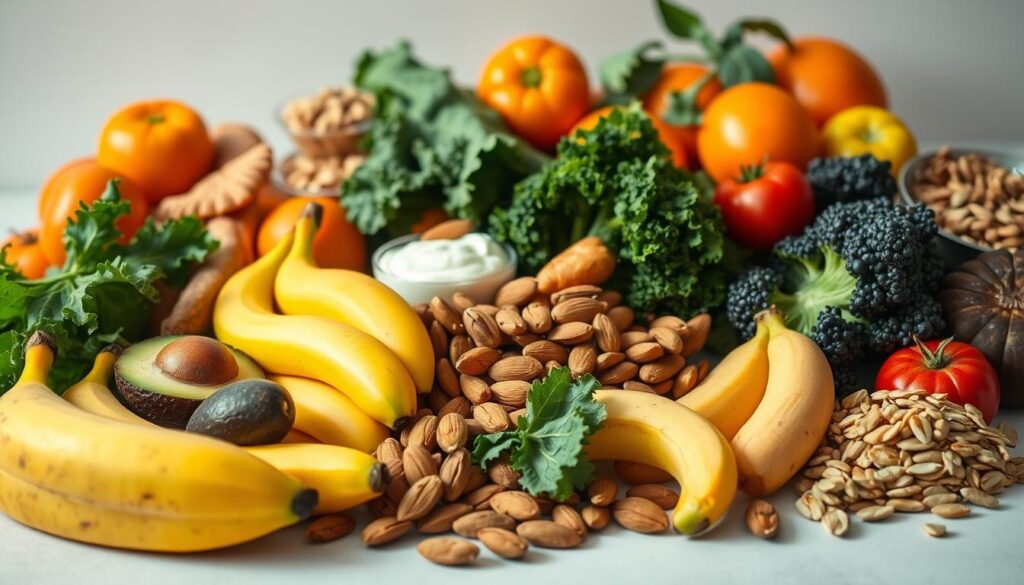
Incorporating potassium-rich foods into your diet can be a game-changer for those who suffer from frequent headaches. Potassium is an essential mineral that helps maintain various bodily functions, including muscle contractions and nerve function, which can impact headache frequency and severity.
Bananas and Other Potassium-Rich Fruits
Bananas are one of the most well-known potassium-rich fruits. A single medium-sized banana provides approximately 422 milligrams of potassium. Other potassium-rich fruits include apricots, oranges, and avocados (yes, avocados are a fruit!). These fruits not only help with headache prevention but also contribute to overall health.
“A diet rich in fruits and vegetables can significantly reduce the risk of various health issues, including headaches,” says a renowned nutrition expert. Incorporating a variety of potassium-rich fruits into your diet can be as simple as having a banana with your breakfast or snacking on dried apricots throughout the day.
Vegetables High in Potassium for Headache Relief
Besides fruits, several vegetables are high in potassium and can aid in headache prevention. These include leafy greens like spinach, root vegetables such as sweet potatoes, and other nutrient-dense options.
Avocados, Sweet Potatoes, and Spinach
Avocados are not only a fruit but also a rich source of potassium. Sweet potatoes are another excellent option, providing a good amount of potassium along with other essential nutrients. Spinach, being a leafy green, is packed with potassium and can be easily incorporated into meals through salads, smoothies, or sautéed dishes.
Simple Recipes That Combine Multiple Headache-Fighting Foods
Combining potassium-rich foods with other headache-fighting ingredients can enhance their benefits. For example, a smoothie made with bananas, spinach, and almond milk can be a nutritious and delicious way to start your day. Another option is baking sweet potatoes and topping them with avocado slices for a potassium-packed meal.
By incorporating these potassium-rich foods into your diet, you can take a proactive step towards reducing headache frequency and improving your overall well-being.
Herbal Teas and Spices That Ease Headache Symptoms
Headache relief can be found in the world of herbal teas and spices, which have been used for their medicinal properties. For centuries, various cultures have relied on these natural remedies to alleviate headache symptoms. Let’s explore some of the most effective herbal teas and spices that can help.
Ginger and Its Powerful Anti-Headache Properties
Ginger is renowned for its anti-inflammatory properties, making it an effective natural remedy for headaches. It works by reducing inflammation and blocking pain pathways in the brain. You can consume ginger in various forms, such as tea, capsules, or added to meals.
Ginger Tea Recipe: Steep fresh ginger slices in boiling water for 5-10 minutes. Strain and enjoy with a touch of honey for added sweetness.
Peppermint, Chamomile, and Other Soothing Teas
Peppermint and chamomile teas are well-known for their calming effects, which can help relax tense muscles and improve blood flow. Peppermint tea, with its menthol content, can also help ease tension headaches.
- Peppermint tea: Relaxes muscles and improves blood flow.
- Chamomile tea: Soothes and calms the nervous system.
- Lavender tea: Promotes relaxation and reduces stress.
Turmeric and Other Anti-Inflammatory Spices
Turmeric contains curcumin, a compound with potent anti-inflammatory and antioxidant properties. Consuming turmeric can help reduce headache frequency by minimizing inflammation.
Creating an Anti-Headache Spice Blend
Mixing various spices can create a potent blend for headache relief. Combine turmeric, ginger, and cinnamon to create a powerful anti-inflammatory mix. Add this blend to your meals or make a tea by steeping it in hot water.
Golden Milk and Other Therapeutic Drinks
Golden milk, made with turmeric, milk (or a dairy alternative), and honey, is a soothing drink that can help alleviate headache symptoms. Other therapeutic drinks include ginger tea and peppermint tea.
| Herbal Tea/Spice | Benefits | Usage |
|---|---|---|
| Ginger | Anti-inflammatory, pain relief | Tea, capsules, cooking |
| Peppermint | Relaxes muscles, improves blood flow | Tea, topical application |
| Turmeric | Anti-inflammatory, antioxidant | Cooking, golden milk |
Foods to Avoid That Can Trigger Headaches
While some foods can relieve headaches, others can trigger them, making it essential to know what to avoid. Certain foods and ingredients can cause headaches in sensitive individuals, either by triggering inflammation, affecting blood vessel diameter, or influencing neurotransmitter activity.
Common Food Triggers and Their Alternatives
Some foods are more likely to trigger headaches due to their ingredients. Knowing these and having alternatives can help manage headache symptoms.
Processed Foods and MSG
Processed foods often contain monosodium glutamate (MSG), a flavor enhancer known to trigger headaches in some people. Alternatives include fresh, whole foods like vegetables, fruits, and lean proteins.
Alcohol, Caffeine, and Chocolate
Alcohol, especially red wine, can trigger headaches due to its histamine and sulfite content. Caffeine can also be a trigger, particularly when consumed in excess or withdrawn suddenly. Chocolate, while a favorite for many, contains phenylethylamine, which can trigger headaches. Alternatives to these include herbal teas, decaf coffee, and carob or cocoa in moderation.
Creating a Food Journal to Identify Personal Triggers
Keeping a food journal is a practical way to identify personal food triggers. By recording what you eat and any headache episodes, you can start to see patterns and make informed dietary changes.
| Food Item | Possible Trigger | Alternative |
|---|---|---|
| Processed Snacks | MSG, preservatives | Fresh fruits, nuts |
| Red Wine | Histamine, sulfites | White wine, herbal teas |
| Caffeinated Beverages | Caffeine | Decaf coffee, herbal teas |
By being mindful of the foods you consume and keeping track of any headache episodes, you can take a proactive approach to managing your headache symptoms.
Conclusion: Integrating Headache-Relief Foods Into Your Lifestyle
Incorporating headache-relieving foods into your diet can be a game-changer for managing headache symptoms. By understanding the connection between food and headaches, you can make informed choices to alleviate your pain.
Start by integrating magnesium-rich foods, hydrating foods, and omega-3 rich foods into your meals. These foods have been shown to reduce headache frequency and intensity. Additionally, be mindful of potassium-packed foods and herbal teas that can provide relief.
Making lifestyle changes for headache management involves more than just dietary adjustments. It’s about creating a balanced lifestyle that promotes overall well-being. By combining a healthy diet with other positive habits, you can effectively reduce your headache symptoms.
Begin your journey to headache relief by incorporating these foods and habits into your daily routine. With time and patience, you can experience the benefits of integrating headache-relief foods into your lifestyle.
